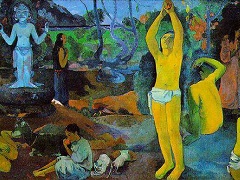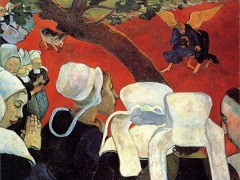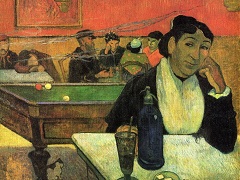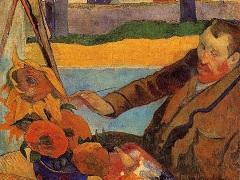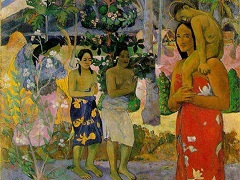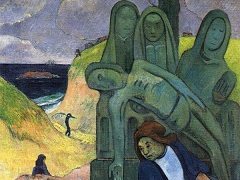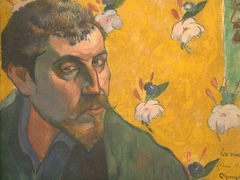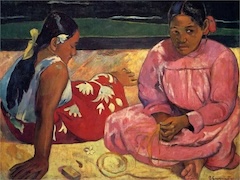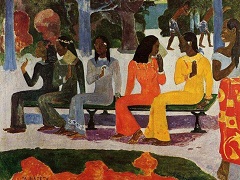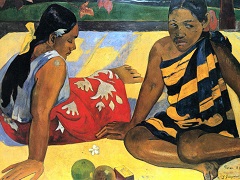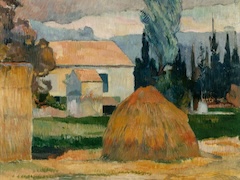The Yellow Christ, 1889 by Paul Gauguin
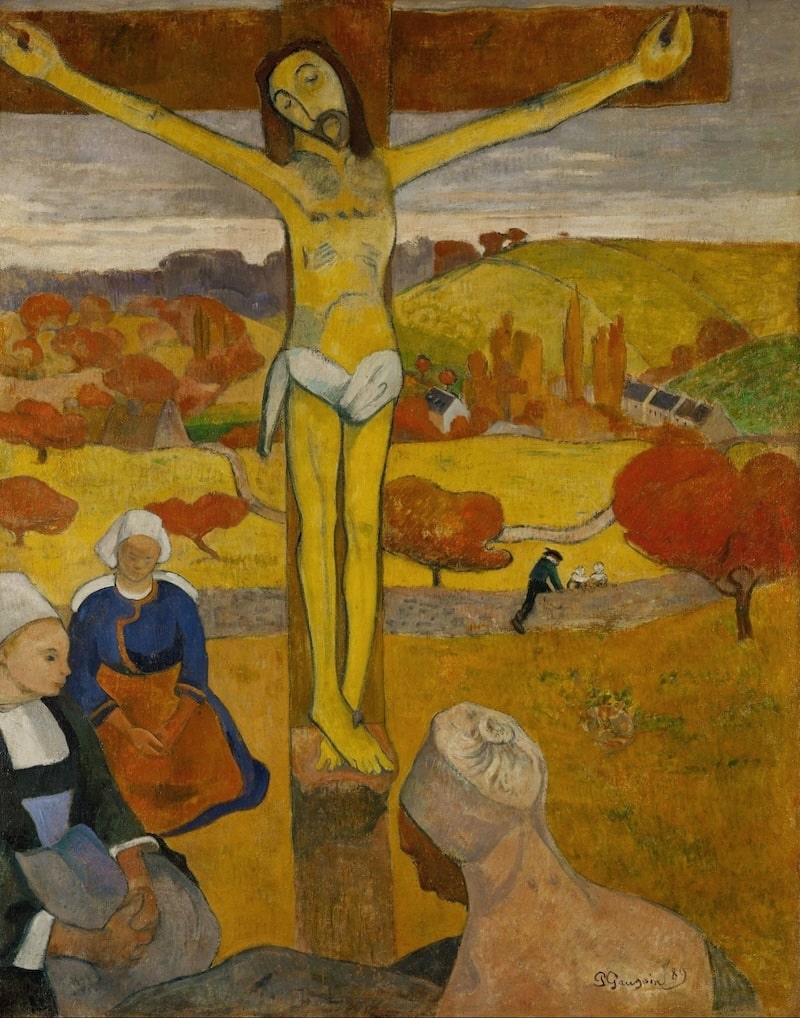
Construced of flat planes, intense colors, and bold circumscribing outlines, The Yellow Christ is in many ways the apogee of Gauguin's early "synthetist" style. The plane of the canvas the surface which must be respected is held by the foreground figure, the strong upright of the crucifix, and the terminating horizontal bar. Against the repeated bands of field and sky and cross, the swinging curves of the women and the trees (closed forms that contrast with the movement of the straight lines) play a graceful counterpoint, the whole drawn together by a bright and simple pattern. The colors are gay, but the starkness of the Breton landscape is conveyed; the women are gentle but their peasant force is still evident.
Even today this is a striking canvas. How much more so it must have appeared at the time it was painted, when the subtle delicacies of the Impressionists' divided brush stroke were still considered revolutionary! The uniform color surfaces, the lines that ring the figures are deliberately crude and simplified, at the opposite pole from Impressionism. Yet Gauguin has observed with care: the costumes are accurate, the light is the cold light of Brittany, the field contains harmonies of green, rust, and yellow. And we know besides that the figure on the cross is closely derived from a Crucifixion in the church of Tremalo not far from Pont-Aven. But the artist has gone beyond naturalistic observation to emotional expression. Gauguin wrote later in his Intimate Journals:
The Impressionists study color exclusively, but without freedom, always shackled by the need of probability. For them the ideal landscape, created from many entities does not exist. . . . They heed only the eye, and neglect the mysterious centers of thought, so falling into merely scientific reasoning."
It is this ideal expression that is Gauguin's goal. Sophisticated painter, traveler, and man from the capital though he may be, and no peasant (indeed because he is all these) he wants his canvas to convey, because it contains, the "great rustic and superstitious simplicity" he found among the Breton people. And so be has simplified the construction of his picture, flattened its space, coarsened its outlines, and heightened its colors, to make it no longer merely an objective record set down by an external observer, but the direct, visual symbol of a naive and trusting religious faith. "A child's tears," Gauguin wrote from Brittany at this time, "are also something and yet they haven't much worldly wisdom."

